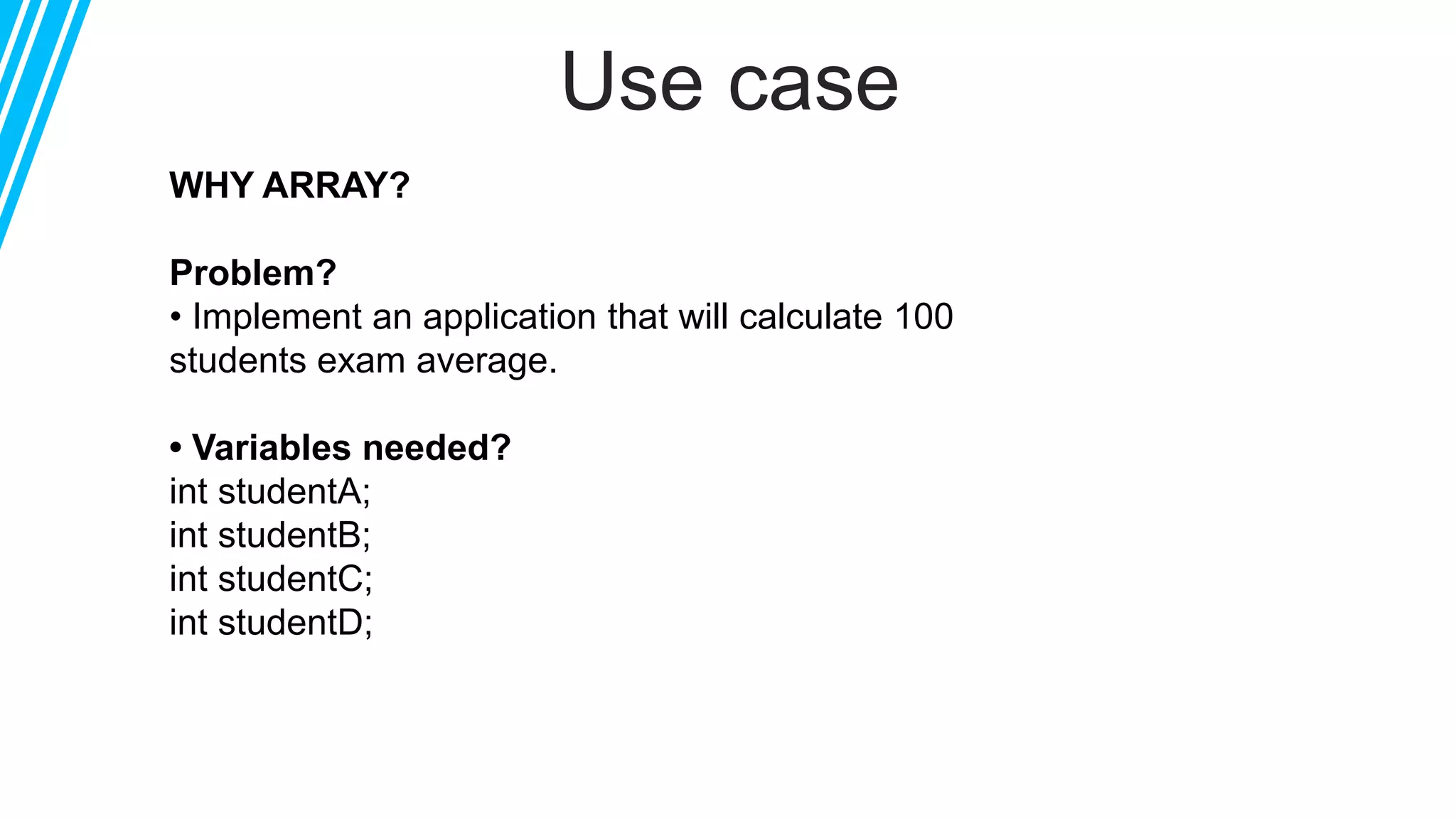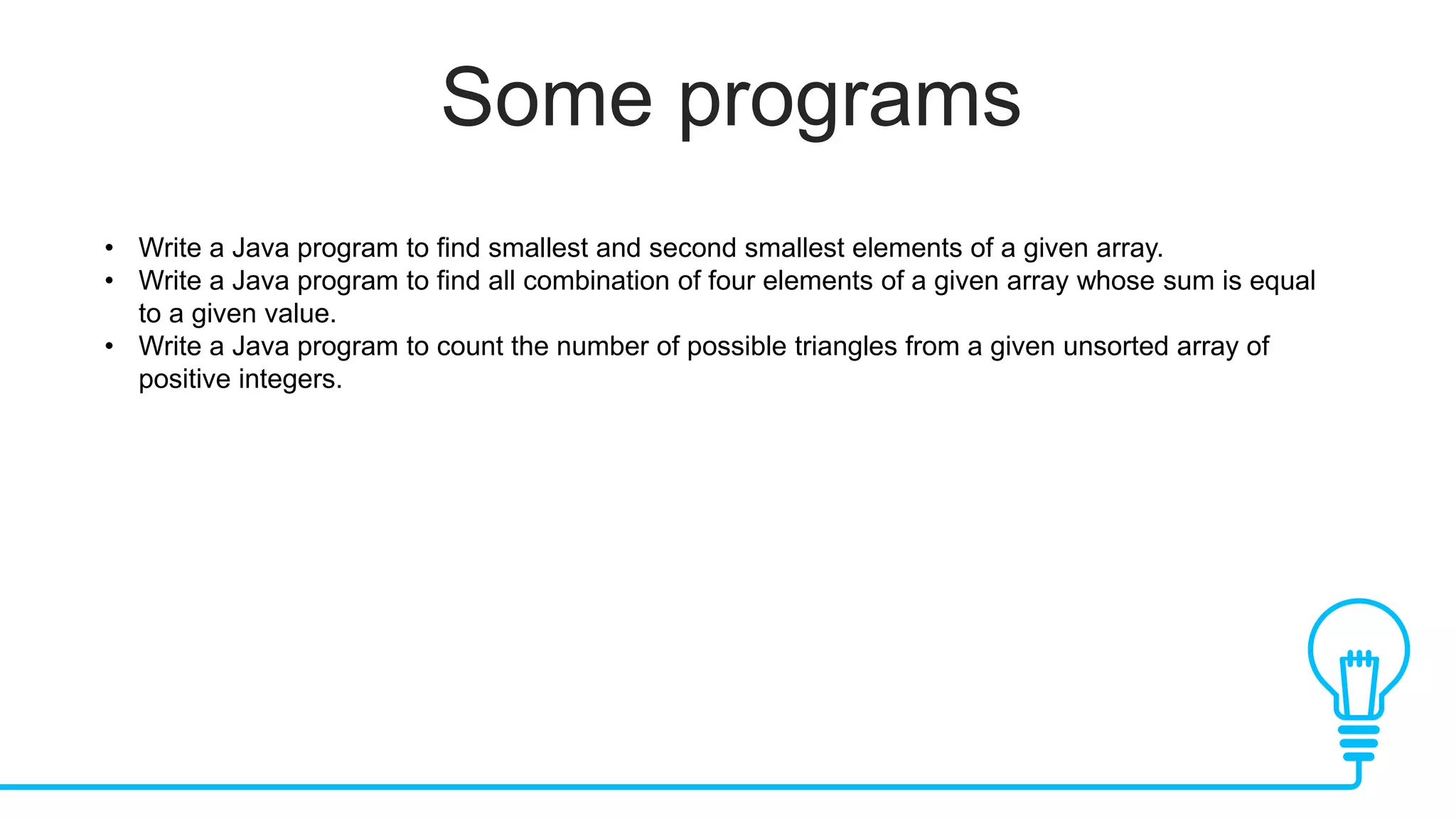The document provides an overview of arrays in Java, including their declaration, types (1-D and 2-D), and how to access elements within them. It discusses important concepts such as bounds checking, initializer lists, and examples of basic code for both one-dimensional and multidimensional arrays. Additionally, it outlines potential programming problems and applications involving arrays.



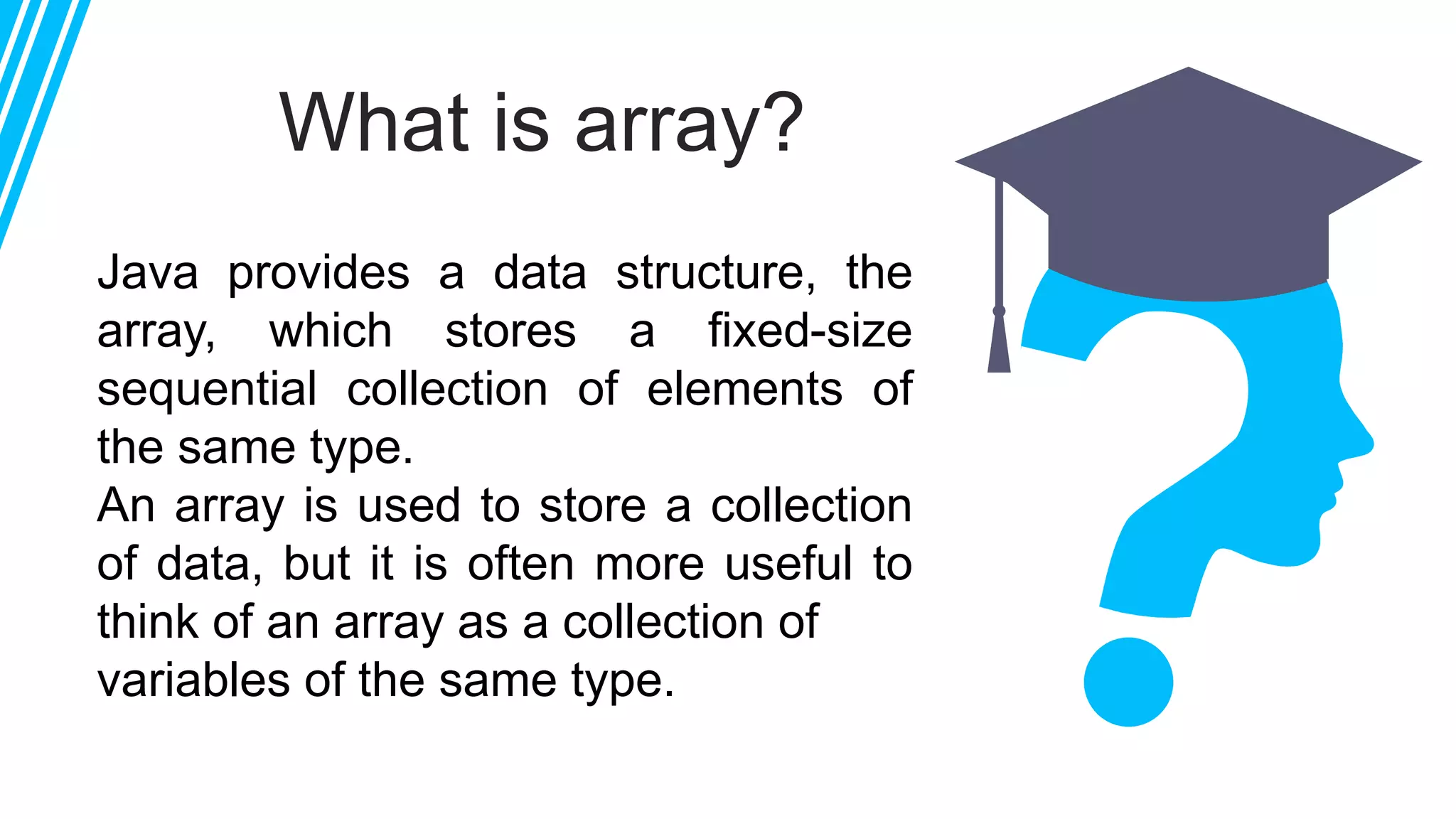
![Basic Declaration of Array
Sytax : Data-type var-name = new Data-type [size];
Example :
int intArray[]; //Array declaration
intArray = new int[20]; //Memory allocation](https://image.slidesharecdn.com/oopswithjava-200908030623/75/OOPs-with-java-5-2048.jpg)
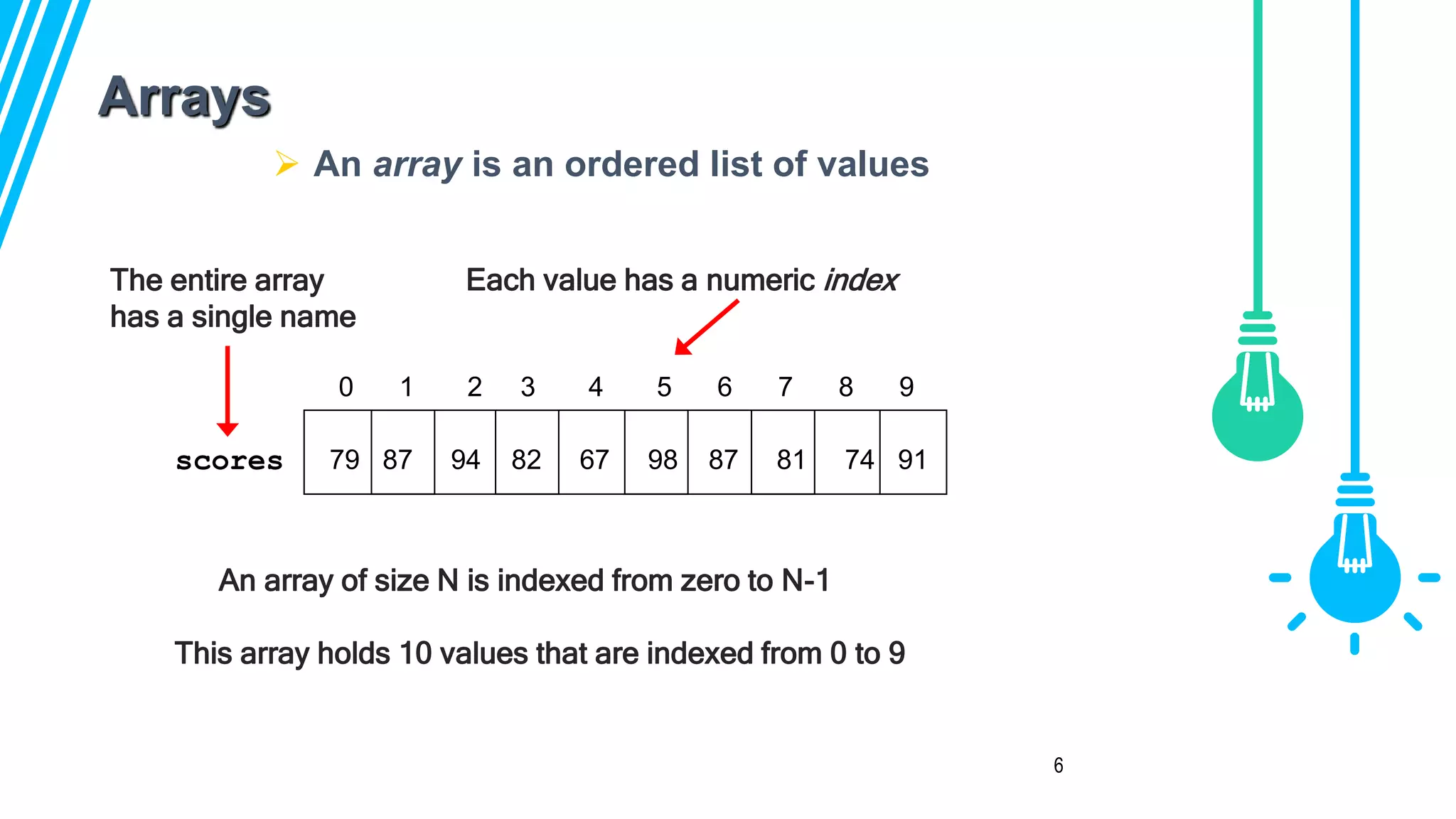
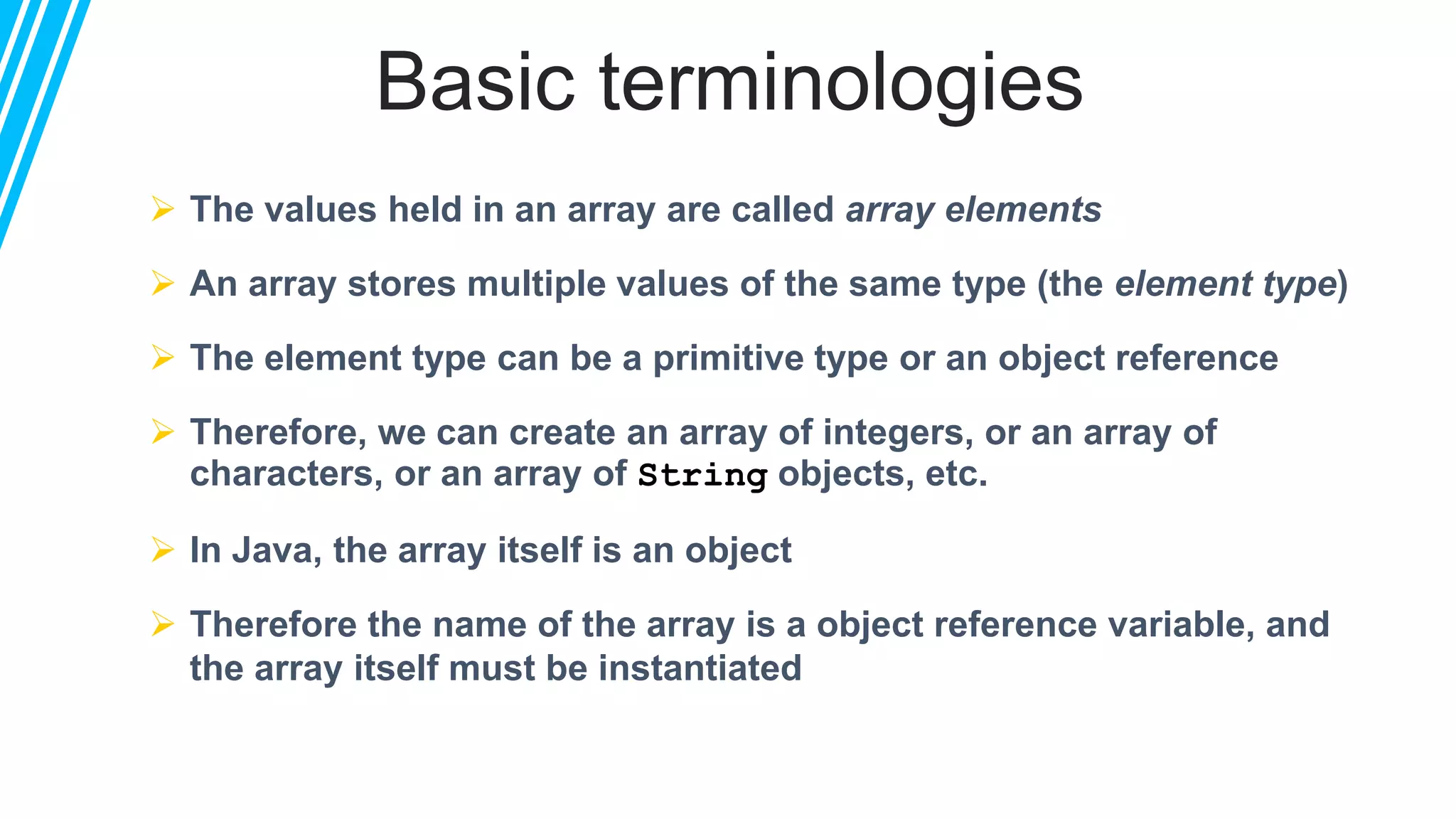
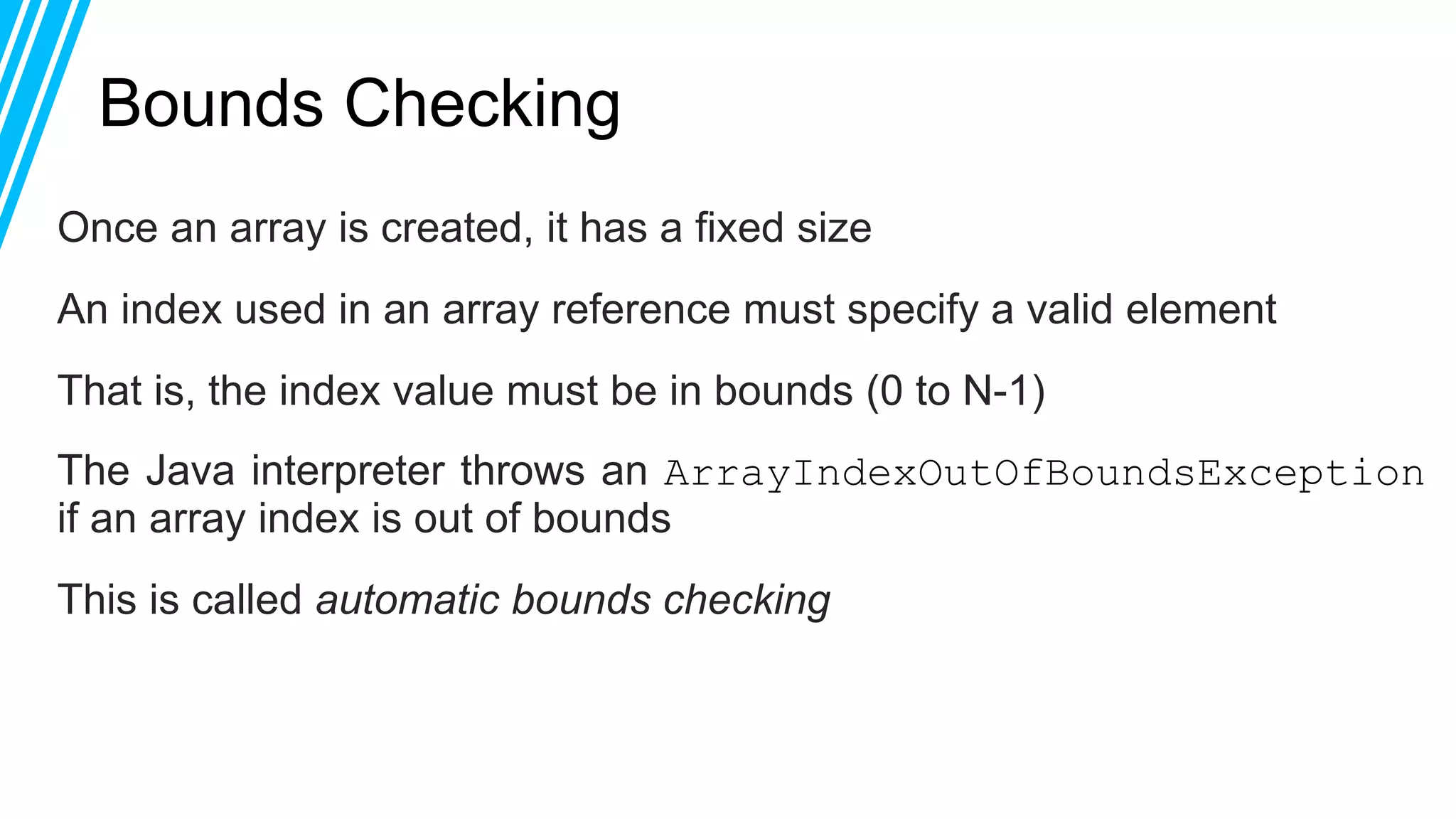
![Initializer Lists
An initializer list can be used to instantiate and initialize an array in
one step
The values are delimited by braces and separated by commas
Examples:
int[] units = {147, 323, 89, 933, 540,
269, 97, 114, 298, 476};
char[] letterGrades = {'A', 'B', 'C', 'D', ’F'};](https://image.slidesharecdn.com/oopswithjava-200908030623/75/OOPs-with-java-9-2048.jpg)
![Accessing Java Array Elements
Example:
// accessing the elements of the specified array
for (int i = 0; i < arr.length; i++)
System.out.println("Element at index " + i + " : "+ arr[i]);
Each element in the array is accessed via its index. The index begins with 0 and ends at (total array
size)-1.
Syntax: array-name[Index-value]](https://image.slidesharecdn.com/oopswithjava-200908030623/75/OOPs-with-java-10-2048.jpg)
![Basic Code
class ArrayExample
{
public static void main (String[] args)
{
// declares an Array of integers.
int[] arr;
// allocating memory for 5 integers.
arr = new int[5];
// initialize the first elements of the array
arr[0] = 10;
// initialize the second elements of the array
arr[1] = 20;
arr[2] = 30;
arr[3] = 40;
arr[4] = 50;
// accessing the elements of the specified array
for (int i = 0; i < arr.length; i++)
System.out.println("Element at index " + i + “:” +arr[i] );
}
}
OUTPUT:
Element at index 0 : 10
Element at index 1 : 20
Element at index 2 : 30
Element at index 3 : 40
Element at index 4 : 50](https://image.slidesharecdn.com/oopswithjava-200908030623/75/OOPs-with-java-11-2048.jpg)
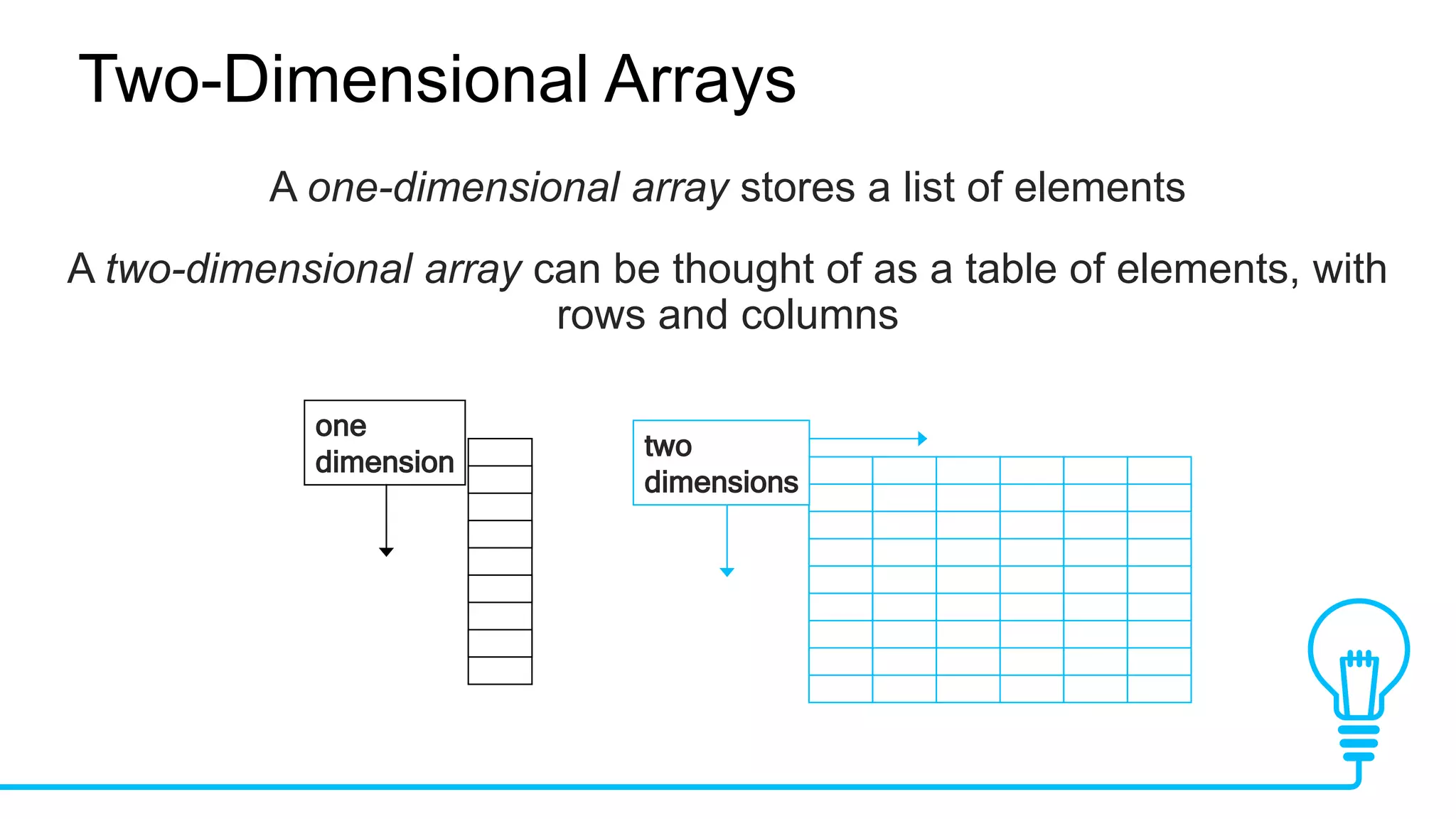
![Two-Dimensional Arrays
To be precise, a two-dimensional array in Java is an array of arrays
A two-dimensional array is declared by specifying the size of each dimension
separately:
int[][] scores = new int[12][50];
A two-dimensional array element is referenced using two index values
value = scores[3][6]
The array stored in one row or column can be specified using one index](https://image.slidesharecdn.com/oopswithjava-200908030623/75/OOPs-with-java-13-2048.jpg)
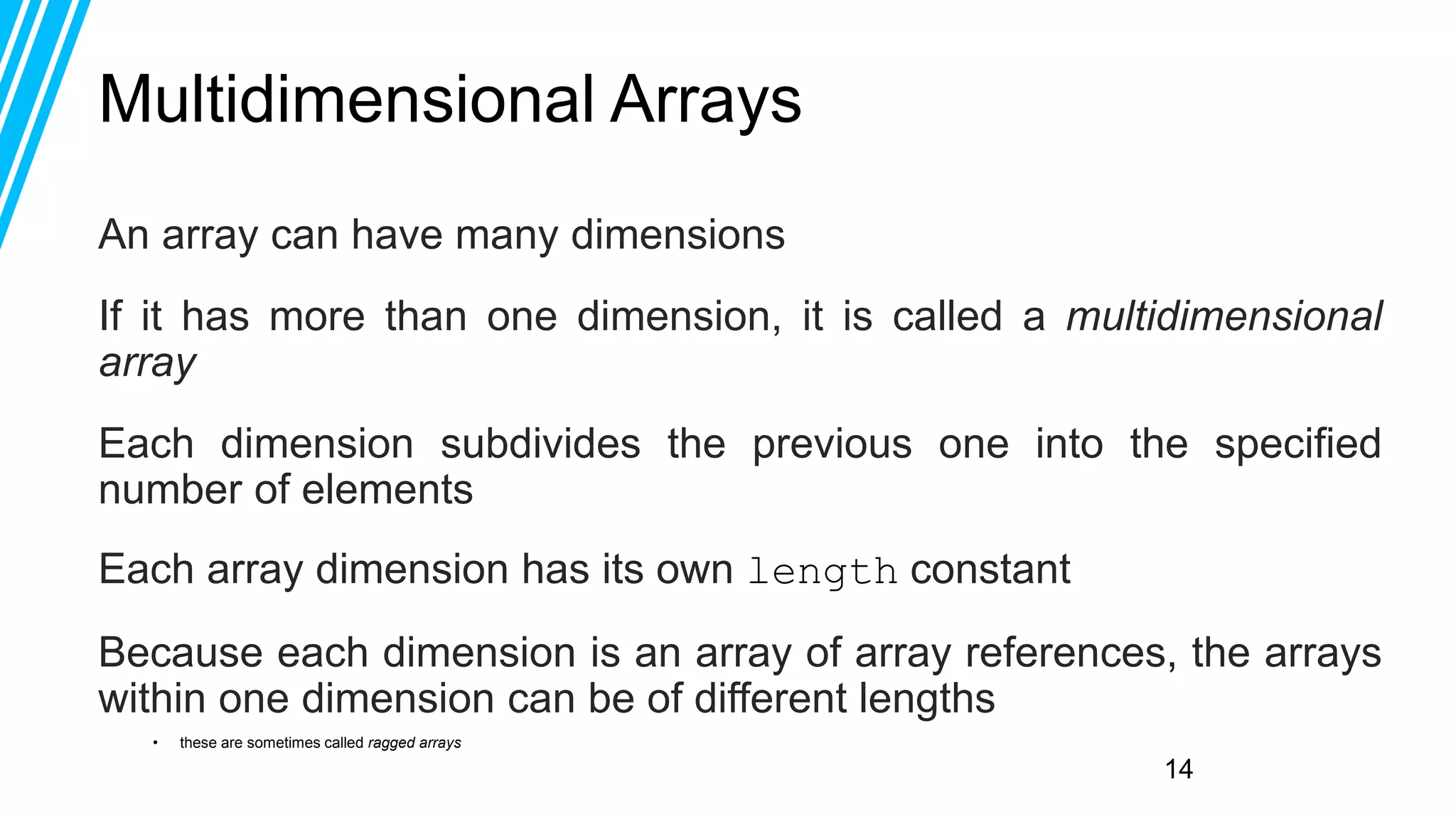
![Basic code
class multiDimensionalExample
{
public static void main(String args[])
{
// declaring and initializing 2D array
int arr[][] = { {2,7,9},{3,6,1},{7,4,2} };
// printing 2D array
for (int i=0; i< 3 ; i++)
{
for (int j=0; j < 3 ; j++)
System.out.print(arr[i][j] + " ");
System.out.println();
}
}
}
OUTPUT:
2 7 9
3 6 1
7 4 2](https://image.slidesharecdn.com/oopswithjava-200908030623/75/OOPs-with-java-15-2048.jpg)
